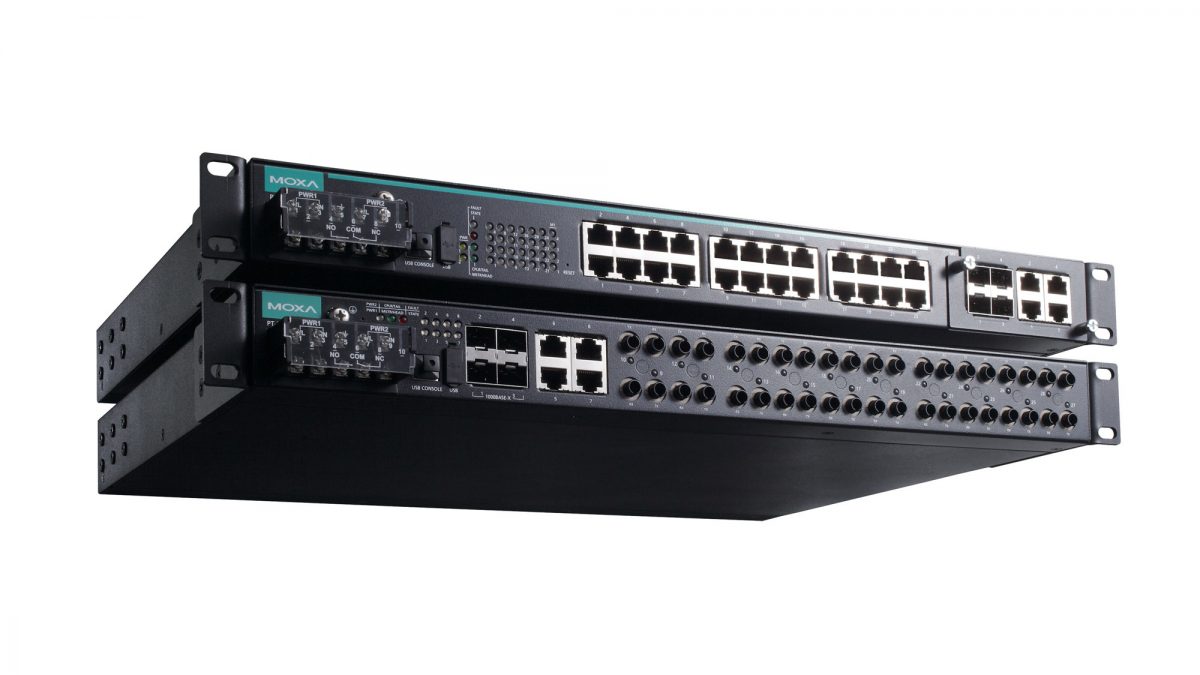1. EXECUTIVE SUMMARY
- CVSS v3 10.0
- ATTENTION: Exploitable remotely/low skill level to exploit
- Vendor: Moxa
- Equipment: PT-7528 Series and PT-7828 Series
- Vulnerabilities: Stack-based Buffer Overflow, Use of a Broken or Risky Cryptographic Algorithm, Use of Hard-coded Cryptographic Key, Use of Hard-coded Credentials, Weak Password Requirements, Information Exposure
2. RISK EVALUATION
Successful exploitation of these vulnerabilities could crash the device or allow access to sensitive information.
3. TECHNICAL DETAILS
3.1 AFFECTED PRODUCTS
Moxa reports these vulnerabilities affect the following Ethernet switches:
- PT-7528 series firmware, Version 4.0 or lower
- PT-7828 series firmware, Version 3.9 or lower
3.2 VULNERABILITY OVERVIEW
3.3 BACKGROUND
3.2.1 STACK-BASED BUFFER OVERFLOW CWE-121
A buffer overflow in the web server allows remote attackers to cause a denial-of-service condition or execute arbitrary code.
CVE-2020-6989 has been assigned to this vulnerability. A CVSS v3 base score of 10.0 has been calculated; the CVSS vector string is (AV:N/AC:L/PR:N/UI:N/S:C/C:H/I:H/A:H ).
3.2.2 USE OF A BROKEN OR RISKY CRYPTOGRAPHIC ALGORITHM CWE-327
The affected products use a weak cryptographic algorithm, which may allow confidential information to be disclosed.
CVE-2020-6987 has been assigned to this vulnerability. A CVSS v3 base score of 6.5 has been calculated; the CVSS vector string is (AV:N/AC:L/PR:N/UI:R/S:U/C:H/I:N/A:N).
3.2.3 USE OF HARD-CODED CRYPTOGRAPHIC KEY CWE-321
The affected products use a hard-coded cryptographic key, which increases the possibility that confidential data can be recovered.
CVE-2020-6983 has been assigned to this vulnerability. A CVSS v3 base score of 9.8 has been calculated; the CVSS vector string is (AV:N/AC:L/PR:N/UI:N/S:U/C:H/I:H/A:H).
3.2.4 USE OF HARD-CODED CREDENTIALS CWE-798
These devices use a hard-coded service code for access to the console.
CVE-2020-6985 has been assigned to this vulnerability. A CVSS v3 base score of 9.8 has been calculated; the CVSS vector string is (AV:N/AC:L/PR:N/UI:N/S:U/C:H/I:H/A:H).
3.2.5 WEAK PASSWORD REQUIREMENTS CWE-521
The application utilizes weak password requirements, which may allow an attacker to gain unauthorized access.
CVE-2020-6995 has been assigned to this vulnerability. A CVSS v3 base score of 9.8 has been calculated; the CVSS vector string is (AV:N/AC:L/PR:N/UI:N/S:U/C:H/I:H/A:H).
3.2.6 INFORMATION EXPOSURE CWE-200
An attacker can access to sensitive information from the web service without authorization.
CVE-2020-6993 has been assigned to this vulnerability. A CVSS v3 base score of 5.3 has been calculated; the CVSS vector string is (AV:N/AC:L/PR:N/UI:N/S:U/C:L/I:N/A:N).
3.3 BACKGROUND
- CRITICAL INFRASTRUCTURE SECTORS: Critical Manufacturing, Energy, Water and Wastewater Systems
- COUNTRIES/AREAS DEPLOYED: Worldwide
- COMPANY HEADQUARTERS LOCATION: Taiwan
3.4 RESEARCHER
Ilya Karpov and Evgeniy Druzhinin from Rostelecom-Solar and Georgy Zaytsev of Positive Technologies reported these vulnerabilities to Moxa.
4. MITIGATIONS
Moxa has developed a solution to address these vulnerabilities: Please contact Moxa Technical Support for a security patch.
Moxa also recommends that users apply the security patch and enable “Account Login Failure Lockout” functions to eliminate any potential risk.
Please see Moxa’s security advisory for more information.
CISA recommends users take defensive measures to minimize the risk of exploitation of this vulnerability. Specifically, users should:
- Minimize network exposure for all control system devices and/or systems, and ensure that they are not accessible from the Internet.
- Locate control system networks and remote devices behind firewalls, and isolate them from the business network.
- When remote access is required, use secure methods, such as Virtual Private Networks (VPNs), recognizing that VPNs may have vulnerabilities and should be updated to the most current version available. Also recognize that VPN is only as secure as the connected devices.
CISA reminds organizations to perform proper impact analysis and risk assessment prior to deploying defensive measures.
CISA also provides a section for control systems security recommended practices on the ICS webpage on us-cert.gov. Several recommended practices are available for reading and download, including Improving Industrial Control Systems Cybersecurity with Defense-in-Depth Strategies.
Additional mitigation guidance and recommended practices are publicly available on the ICS webpage on us-cert.gov in the Technical Information Paper, ICS-TIP-12-146-01B–Targeted Cyber Intrusion Detection and Mitigation Strategies.
Organizations observing any suspected malicious activity should follow their established internal procedures and report their findings to CISA for tracking and correlation against other incidents.
CISA also recommends users take the following measures to protect themselves from social engineering attacks:
- Do not click web links or open unsolicited attachments in email messages.
- Refer to Recognizing and Avoiding Email Scams for more information on avoiding email scams.
- Refer to Avoiding Social Engineering and Phishing Attacks for more information on social engineering attacks.
No known public exploits specifically target these vulnerabilities.
Source:


Stay connected